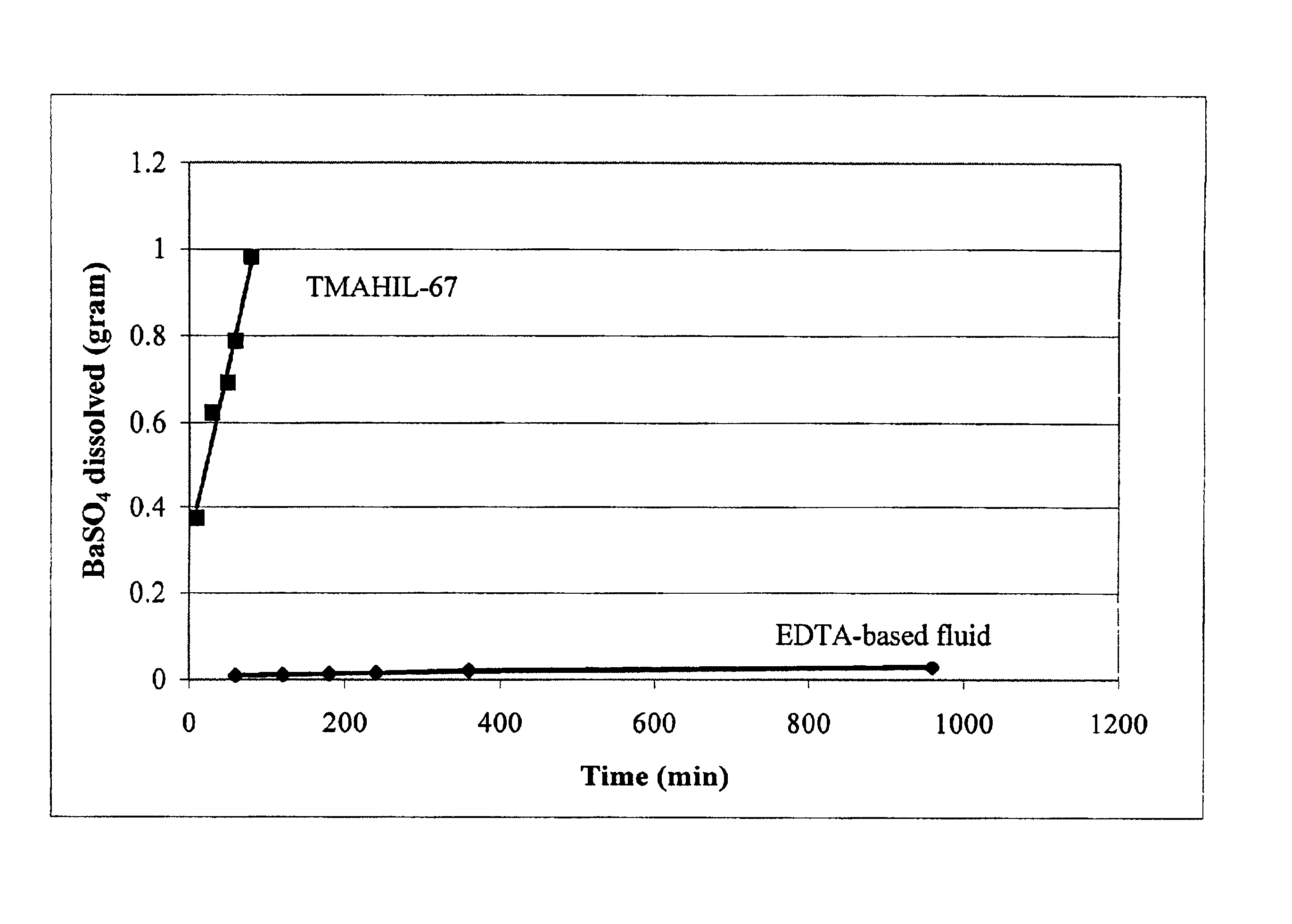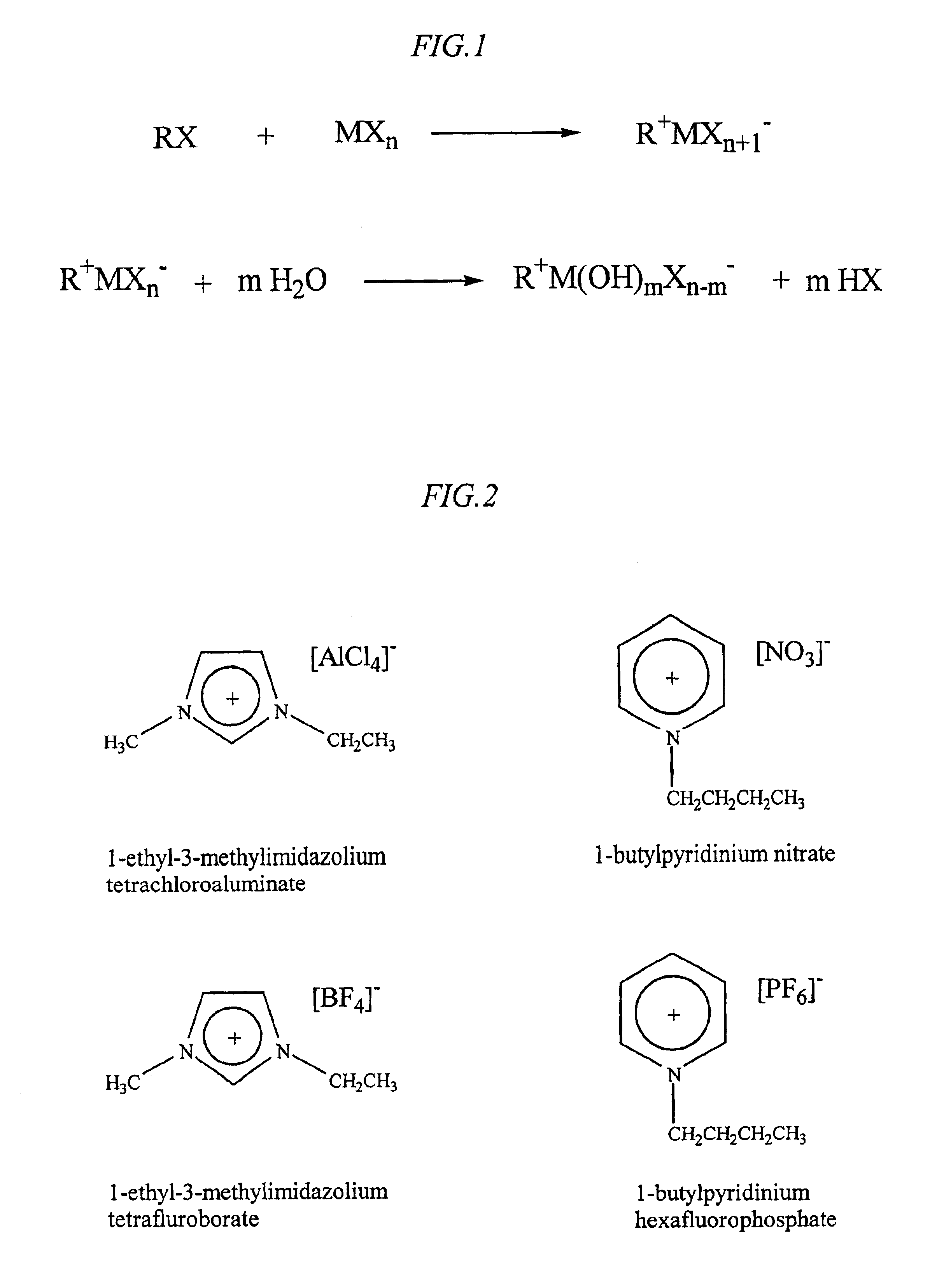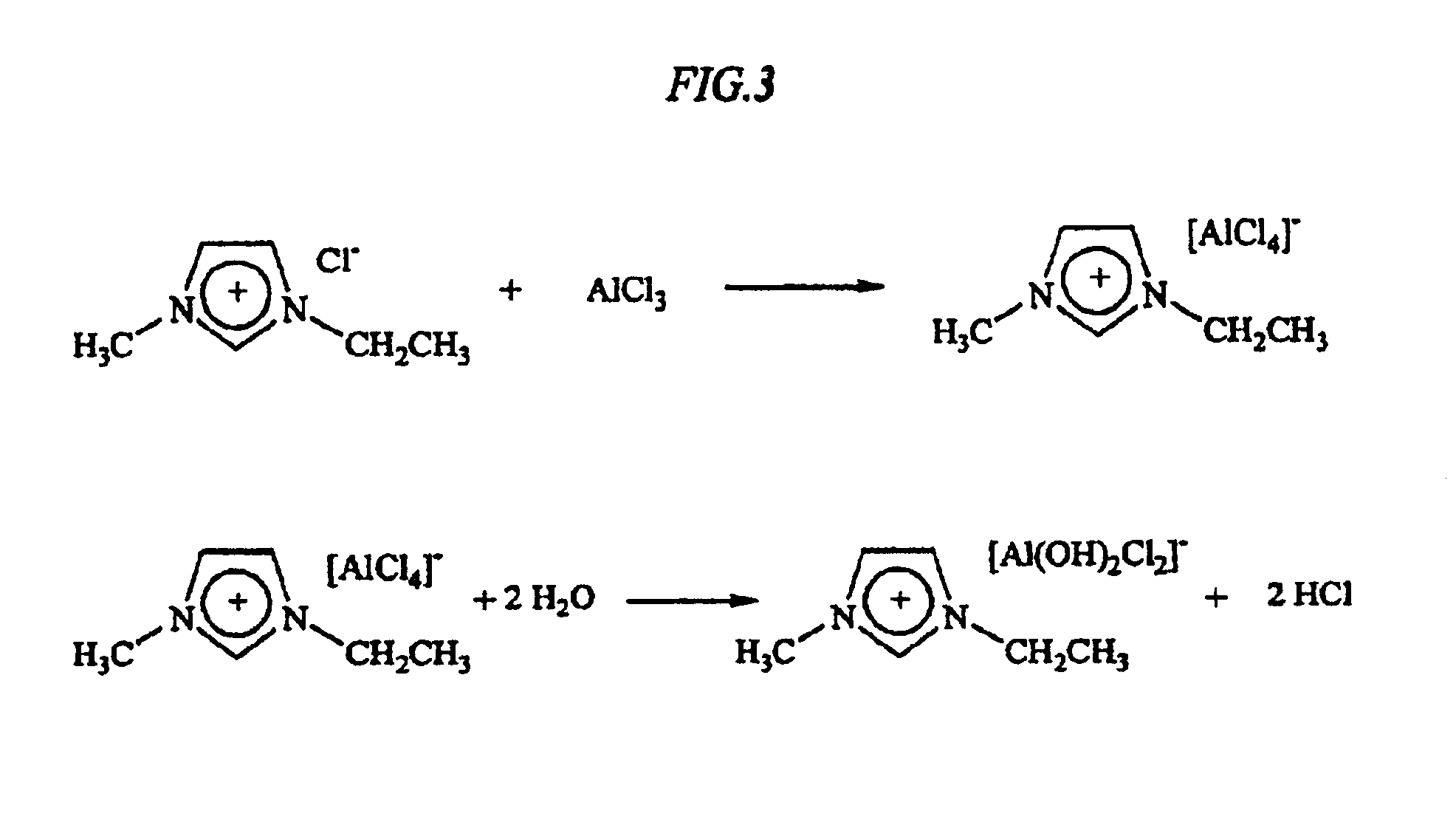Scale removal
a technology for hydrocarbon wells and scale, applied in the direction of fluid removal, borehole/well accessories, other chemical processes, etc., can solve the problems of scale form to such an extent, mechanical techniques for its removal, e.g., milling, etc., and achieve the effect of reducing the number of wells
- Summary
- Abstract
- Description
- Claims
- Application Information
AI Technical Summary
Benefits of technology
Problems solved by technology
Method used
Image
Examples
example 1
Synthesis of Ionic Liquid and Acid Generation
[0047]Initially, an ionic liquid (IL) was prepared according to the following reaction schematic:
RX+MXn→R+MX−n+1
where R is 1-ethyl-3-methylimidazolium, X is chloride, and MXn is AlCl3. The two reagents were combined in a 1:1 molar ratio. Upon reaction, a liquid was produced. The reaction was highly exothermic. In the next step, acid was prepared from the product formed in the first reaction, simply by adding water to the reaction product, according to the following reaction schematic:
R+MXn−+H2O→H++X−+RX+MXn−1(OH); and
MXn−1(OH)+H2O→H++MXn−2(OH)2+X−
[0048]The choices of M, R, and X are based on the criteria identified previously, in addition to the particular species also identified. What does matter is that an ionic liquid is formed. Again, as indicated previously, the precise composition of the ionic liquid—i.e., of the two components that make up the ionic liquid matter—can be varied depending upon the particular application. Modification...
example 2
CaCO3 Dissolution by Ionic Liquid-Based Fluid Compared With Dissolution by a Conventional System
[0049]This example describes results of laboratory studies that demonstrate the efficacy of ionic liquids in dissolution of CaCO3. In particular, the purpose of these studies was to compare the rate of CaCO3 dissolution by an ionic liquid with that of HCl, a conventional treatment of choice.
[0050]First, the ionic fluid was prepared from the two starting materials: 1-ethyl-3-methylimidazolium chloride and aluminum trichloride. Both of these materials are in solid form at room temperature prior to mixing (the former is a crystalline substance; the latter, a powder). The two solid reactants were combined in about equimolar amounts (4.4 g imidazolium, F. W.=146.2; 4.0 g AlCl3, F. W.=133.34 in a pyrex reaction vessel. The reaction began almost immediately with only modest shaking of the reaction vessel; within moments product ionic liquid, 1-ethyl-3-methylimidazolium tetrachloride, was formed,...
example 3
BaSO4 Scale Dissolution (Conventional Fluids Versus Ionic Liquid-Based Fluids)
[0054]FIG. 5 is a graph illustrating laboratory results and comparing the dissolution of BaSO4 upon contact with a conventional fluid (an EDTA-based fluid) with the dissolution of BaSO4 by an IL-based fluid or a fluid of the invention. Each symbol represents a separate data point. The EDTA-based fluid was a 50% solution of EDTA+K2CO3. The IL-based fluid was pure trimethyl amine dialuminum heptachloride (TMAHIL-67). Equal weight percents of the IL-based fluid and the conventional fluid were used. Barium sulfate scale was simulated with 100-200 μm particles of BaSO4. In particular, FIG. 5 shows grams of the BaSO4 particles dissolved as a function of time. As evidenced by the two empirical curves, BaSO4 scale dissolution (extent) was much greater in the presence of the IL-based system than in the presence of the conventional system. The upper-most datapoint for the IL-based fluid represents the dissolving cap...
PUM
| Property | Measurement | Unit |
|---|---|---|
| Temperature | aaaaa | aaaaa |
| Temperature | aaaaa | aaaaa |
| Temperature | aaaaa | aaaaa |
Abstract
Description
Claims
Application Information
 Login to View More
Login to View More - R&D
- Intellectual Property
- Life Sciences
- Materials
- Tech Scout
- Unparalleled Data Quality
- Higher Quality Content
- 60% Fewer Hallucinations
Browse by: Latest US Patents, China's latest patents, Technical Efficacy Thesaurus, Application Domain, Technology Topic, Popular Technical Reports.
© 2025 PatSnap. All rights reserved.Legal|Privacy policy|Modern Slavery Act Transparency Statement|Sitemap|About US| Contact US: help@patsnap.com



